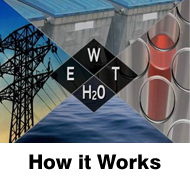
BEAVERTON, Ore. (November 30, 2010) – In an effort to further industry sustainability efforts, NIKE, Inc. (NYSE:NKE) today released its Environmental Apparel Design Tool. Based on Nike’s Considered Design Index, the release of the tool aims to accelerate collaboration between companies, fast-track sustainable innovation and decrease the use of natural resources like oil and water.
Designed and built by Nike over seven years with a six million dollar investment, the software-based Environmental Apparel Design Tool helps designers to make real time choices that decrease the environmental impacts of their work.
Recognizing the decline of natural resources and the need to move to a low-carbon economy, the tool is a practical way to rate how apparel designs score in reducing waste and increasing the use of environmentally preferred materials while allowing the designers to make real time adjustments.
Nike is committed to open innovation and welcomes others building and improving on this tool.
“This tool is about making it simple for designers to make the most sustainable choices right at the start of the product creation process. Over the past four years it has proved to be invaluable at Nike and has helped us create products with a higher sustainability standard,” said Hannah Jones, Vice President of Nike Sustainable Business and Innovation
“By releasing the tool we want others to improve on it and we hope to inspire further collaboration to create global industry standards for a level playing field, encourage widespread industry adoption of sustainable design practices and have more sustainable products available for the consumer.”
The Nike football jerseys produced for South Africa 2010 are an example of how the tool helped designers produce the most environmentally-friendly and technologically-advanced kits in football’s history. Made from 100% recycled polyester, the material choice diverted 13 million plastic bottles from landfill.
In the last year alone, Nike doubled its use of recycled polyester, saving 82 million plastic bottles from landfill. If all apparel companies committed to converting one third of their polyester garments to recycled polyester, the demand for recycled polyester would be greater than the annual production of plastic bottles, diverting PET bottles from landfill.
“Nike’s decision to open-source this design tool is a win-win because it leverages important intellectual capital to benefit an entire industry,” said Mindy Lubber, president of Ceres, a leading coalition of investors and environmental groups that works with companies like Nike to address sustainability challenges. “Whether for sneakers or cars, it is hugely important to integrate water, chemical, energy and waste considerations into all product design. If all apparel companies use this tool, the impacts could be breathtaking, from less-clogged landfills to expanding our sustainable material industries.”
Mike Barry, Head of Sustainability for Marks & Spencer, who has worked closely with Nike for several years on sustainability issues, said: “As a company committed to developing a sustainable business, we welcome this type of industry collaboration. The Nike tool will help apparel companies and retailers design more sustainable product. We firmly believe that sharing knowledge like this helps us all move towards a more sustainable future faster.”
In addition to the Environmental Apparel Design Tool, Nike will also be releasing its Footwear Design Tool, Material Assessment Tool and Water Assessment Tool in 2011.

Comments by our Users
“Although it doesn't work with absolute LCA and doesn't overlook the whole life cycle or supply chain, it is a quick and easy tools to use and it provides you with, more sustainable, alternative materials and improvement area's. And isn't it great it is fr”